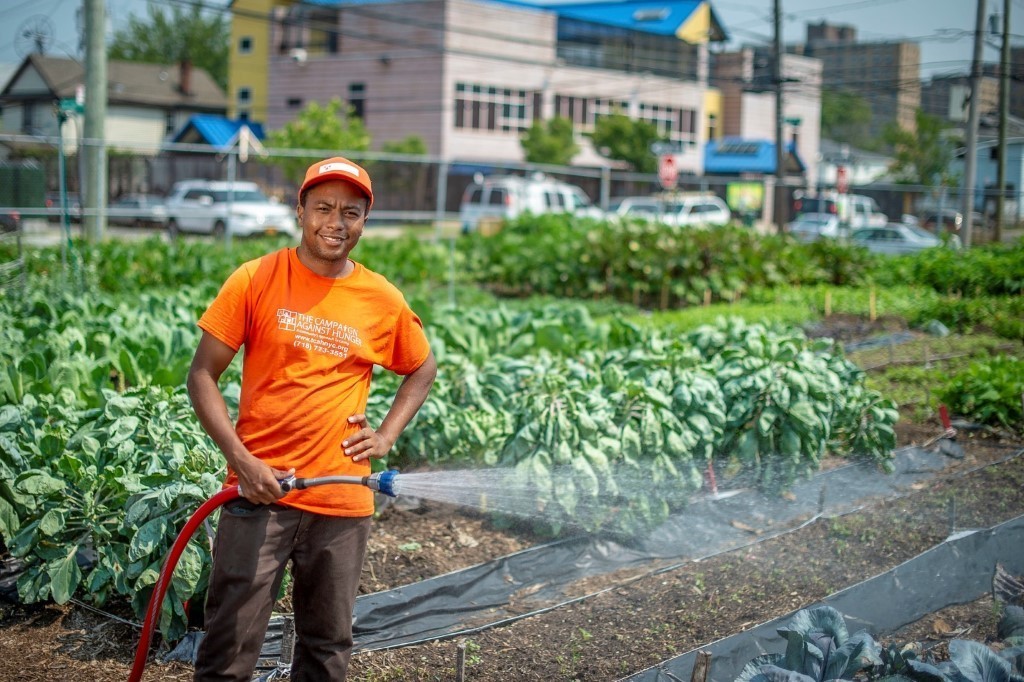For CDFA, Governor Newsom’s proposed budget represents an important step in facilitating economic recovery after the tumult of 2020. And of course, we’re still facing those challenges, but we’re also leaning forward to embrace what’s ahead.
Like all business and life in California, the agricultural sector suffered disruptions and lost markets but rapidly pivoted to protect workers, divert food without markets to food banks and other charities, and find innovative ways to meet new local market opportunities. Agriculture has an essential role to play in our economic recovery as well as the health and well-being of Californians.
This budget includes strategic investments to support California’s agriculture industry as it addresses continued challenges and rapid innovation while also advancing the state’s climate resilience objectives.
Climate Smart Agriculture
Building on California’s leadership in reducing greenhouse gas emissions and protecting communities and the environment from climate impacts, the Budget includes investments to support the agriculture industry in its advancement of Climate Smart Agriculture.
Healthy Soils Program—$30 million from the Greenhouse Gas Reduction Fund for the Department of Food and Agriculture to provide grants for on-farm soil management practices that sequester carbon.
FARMER—$170 million from Greenhouse Gas Reduction Fund for the Air Resources Board to provide funding that supports the replacement of agricultural harvesting equipment, agricultural pump engines, tractors, and other equipment used in agricultural operations to reduce greenhouse gas emissions.
Climate Catalyst Fund—$50 million from General Fund to support Climate Smart Agriculture loans to advance projects that may include but are not limited to: methane reduction; equipment replacement; water efficiency; healthy soils; circular economies; on-farm bioenergy; energy efficiency for food processing; and renewable energy systems and energy storage for agricultural operations.
Water Efficiency and Sustainable Groundwater
The Budget proposes $100 million General Fund to support water efficiency projects and a transition to sustainable groundwater, including $50 million from the Administration’s early-action package for this issue.
Sustainable Groundwater Management Act Grants—$60 million from the General Fund to the Department of Water Resources for grants to support economic mitigation planning and groundwater implementation projects across critically over-drafted basins.
State Water Efficiency and Enhancement Program Grants (SWEEP)—$40 million from the General Fund to the Department of Food and Agriculture to provide incentives that help farmers reduce irrigation water use and reduce greenhouse gas emissions from agriculture pumping.
Pesticides
Integrated Pest Management Programs – To facilitate sustainable pest management, the budget includes $3.75 million for the Department of Agriculture to continue the development of Integrated Pest Management (IPM) strategies, including the Biologically Integrated Farming Systems (BIFS) grant program and others.
These programs support non-conventional pest management technologies for specialty crops, research exotic pests that are likely to arrive in California and proactively identify mitigation strategies, and provide outreach for biologically integrated plant-based farming systems that reduce pesticide use.
The budget also includes $8 million for CDFA to expand CSU and UC research and extension capacity for IPM through cooperative extension.
COVID Impact: Economic Recovery
Farm to School – The budget includes $10 million from the General Fund to continue the Office of Farm to Fork’s Farm to School Program. This funding will build upon the success of the pilot program established in the 2020 Budget Act and continue to support California farmers and expand healthy food access by providing grants to schools to establish programs that coordinate local and California Grown food procurement and utilization in school meals
This will also support food and agriculture education in classrooms and cafeterias through experiential learning opportunities in school gardens, on farms, and other culinary and agricultural pathways.
Small and Mid-Size Farm Support – Recognizing that many sectors in agriculture are struggling, the budget includes $6.7 million from the General Fund to contract with the University of California Cooperative Extension to provide direct technical assistance and grants to technical assistance providers as well as small, mid-sized and underserved farmers.
These resources will help farmers with business planning and navigating regulatory compliance, and will help them access and leverage additional state and federal funds.
Impact Assessment and Alignment of Regulatory Reporting Requirements for Agriculture – The budget includes $6 million from the General Fund for regulatory alignment and efficiencies, including $4 million to engage a consultant to evaluate and implement the alignment of regulatory reporting activities across state agencies. The objective is to reduce unnecessary burdens to farmers and ranchers in their efforts to meet regulatory compliance.
There is also $2 million to support a business assessment for the establishment of a unified licensing portal at CDFA.
Public Health
California’s Implementation of the Food Safety Modernization Act – The Budget includes $8.7 million in Federal Fund authority and 24 positions to continue and expand the Department of Food and Agriculture’s Produce Safety Program.
The Food Safety Modernization Act established federal science-based minimum standards for the safe growing, harvesting, packing, and holding of fruits and vegetables grown for human consumption. The Act enables the United States Food and Drug Administration to better protect public health by strengthening the food safety system and focusing more on preventing food safety issues rather than reacting to problems after they occur.
Network of California Fairs
Recognizing the significant economic hardship of fairs during COVID-19, the ’21-’22 budget includes $50 million from the General Fund to continue supporting state-affiliated fairgrounds’ operational costs while the state continues to evaluate alternative business models.
The budget also includes $10 million from the General Fund to support fairground deferred maintenance, with a priority on fairgrounds that are used to support emergency operations. This is in addition to $40.3 million from the 2020 Budget Act to support fairs that are projected to have insufficient reserves to pay legally mandated costs that may be incurred during the state civil service layoff process.
The Newsom Administration is also in the process of evaluating alternative business and governance structures to enable fairs to operate more efficiently, meet local community needs, and serve public health and safety roles in the state’s emergency response system.
Cannabis Consolidation
In an effort to improve access to licensing and simplify and centralize regulatory oversight of commercial cannabis activity, the budget includes $153.8 million from the Cannabis Control Fund to reflect the consolidation of the three state licensing authorities into a single Department of Cannabis Control within the Business, Consumer Services, and Housing Agency on July 1, 2021.
This proposal seeks to further the goals of legalization and regulation by creating a single point of contact for cannabis licensees, local governments, and other stakeholders.
Further, centralizing the licensing programs’ enforcement efforts will result in more effective enforcement that better protects public health, safety and lands, and will make it more costly and inefficient to participate in the illicit cannabis industry.
Read more in this budget link at the Department of Finance web site









